Recent Articles
Popular Makes
Body Types
2019 Toyota Tacoma vs. 2019 Toyota Tundra: Which is for you?
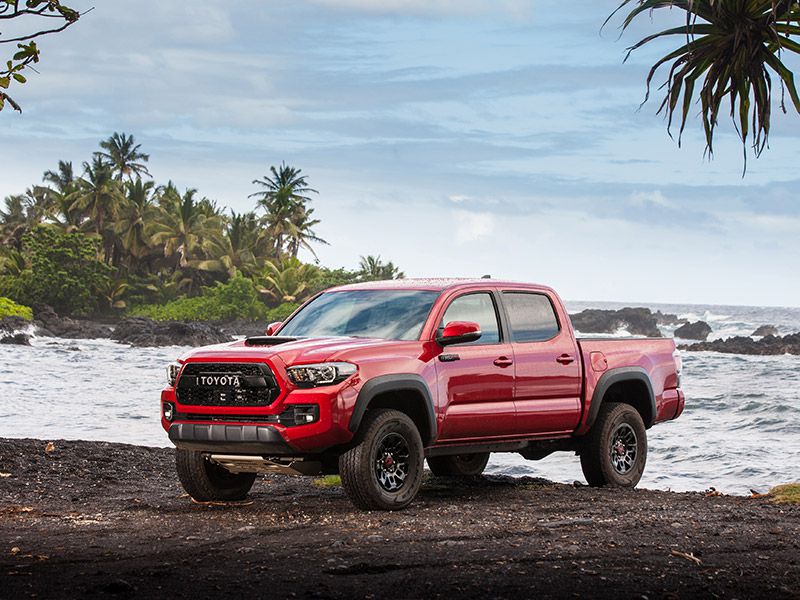
2017 Toyota Tacoma TRD Pro front three quarter ・ Photo by Toyota
Toyota has a long and successful history with pickup trucks. Much of that success can be linked to the company’s compact and mid-size truck lines, which have evolved into the current 2019 Toyota Tacoma mid-size pickup. The Tacoma debuted as a 1995 model and is currently in its third generation. The 2019 Toyota Tundra full-size pickup evolved from the T100, which debuted as a 1993 model. The Tundra debuted as a 2000 model and has powered on through two generations since.
Both the Tacoma and Tundra have earned reputations as durable, dependable trucks, and the Tacoma in particular commands towering resale values. But if you’re looking for your next pickup truck, how can you decide between these two worthy vehicles?
Exterior Dimensions
The biggest and most obvious difference between the Tundra and Tacoma is sheer size. The Tundra is a full-size pickup, while the Tacoma is a mid-size. The Tundra comes with a choice of long wheelbase (164.6 inches) or short wheelbase (145.7 inches), and Double Cab or Crew Max body styles. Double Cabs get a long bed (8 feet), while the Crew Max has a short bed (5.5 feet). Overall length is 247.8 inches (Double Cab) and 228.9 inches (Crew Max). The Tundra is 79.9 inches wide and 75.8 to 76.4 inches tall.
The Tacoma wheelbases are 127.4 inches and 140.6 inches, depending on the version. Overall length is 212.3 inches with a short bed (5 feet), and 225.5 inches with a long bed (6 feet). The Tacoma is 74.4 to 75.2 inches wide and 70.6 inches tall.

Photo by Toyota
Interior Dimensions
Technically speaking, the Tacoma’s Access Cab seats four, but in reality, the space behind the front seat is better suited to cargo and occasional use. The Tacoma’s Double Cab, though, genuinely seats five (two in front/three in the second row). Legroom up front is good at 42.9 inches, and there's 32.6 inches in the rear. Shoulder room in the front is 58.3 inches, 58.9 in the rear (Double Cab), and hip room is similarly generous at 57.2 inches front/56.3 inches rear.
The Tundra is more like a big SUV with a bed. Equip it with a bench seat up front, and both the Double Cab and CrewMax can carry up to six passengers. Legroom in the Double Cab is 42.5 inches front/34.7 inches rear, while in the CrewMax it’s 42.5 front/42.3 rear). Shoulder room is 65.7 inches front/65.6 inches rear, and hip room is 62.6 inches front/60.4 inches rear).
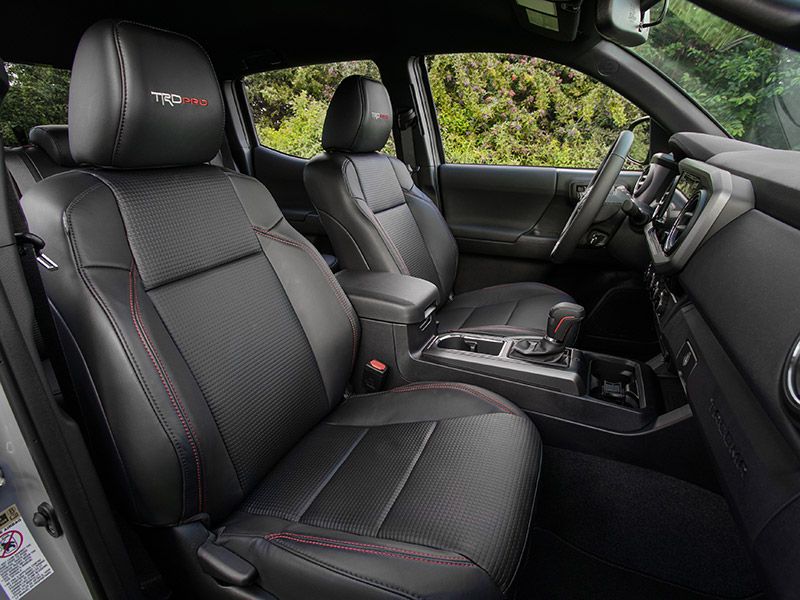
Photo by Toyota
Exterior Design
The Tundra has presence. It is big, and its designers chose to emphasize this with a massive grille, chunky wheel openings, and big, expressive lighting. It has a great stance, especially in 4x4 trim and TRD Pro livery. 18-inch wheels are standard on the SR and SR5 trims, while 20-inch wheels (the right size) come with the Limited, Platinum and 1794 editions.
The Tacoma is much more of an adventure truck and has a lighter, more athletic look than the workhorse Tundra. It has a split grille that resembles a face with an underbite, functional hood scoops, and a sculpted body. The Tacoma sits tall above its wheels and looks ready for action. 16-inch wheels are standard with the four-cylinder engine, while 17-inch and 18-inch wheels come with the V6.
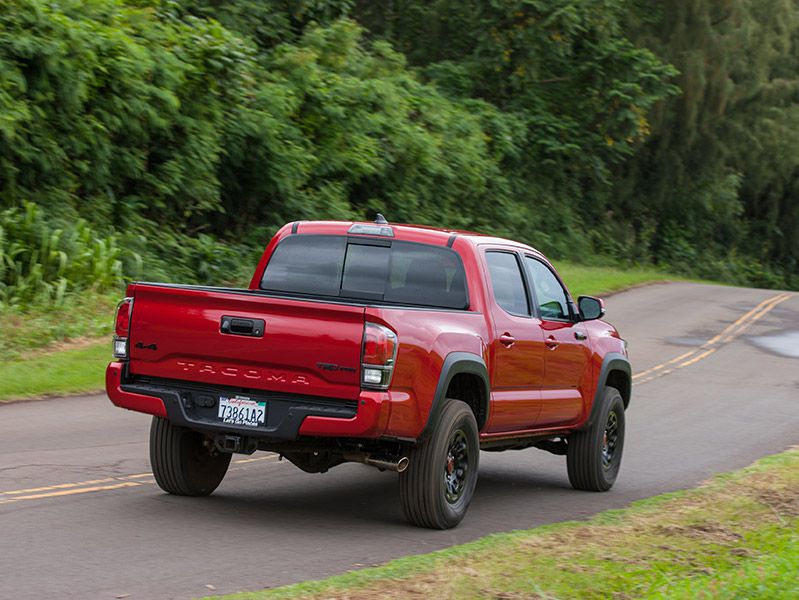
Photo by Toyota
Interior Design
Like their exterior designs, the Tundra and Tacoma’s interiors reflect the character of the trucks. The Tundra uses horizontal lines to give a sense of width and has big, chunky design elements that never let you forget that you’re driving a great big truck. If you like luxury with your truck, you’re in luck – the Tundra comes in a Platinum trim level, and even tops that with the 1794 Edition that ups the luxury to impressive levels, competitive with F-150’s King Ranch Edition.
The Tacoma is designed to be a bit more rugged and youthful than the Tundra, which is appropriate to its character and purpose. It gets a beefy steering wheel, chunky knobs and controls, and a combination of textures and materials that give the impression that they’re designed to take a beating.
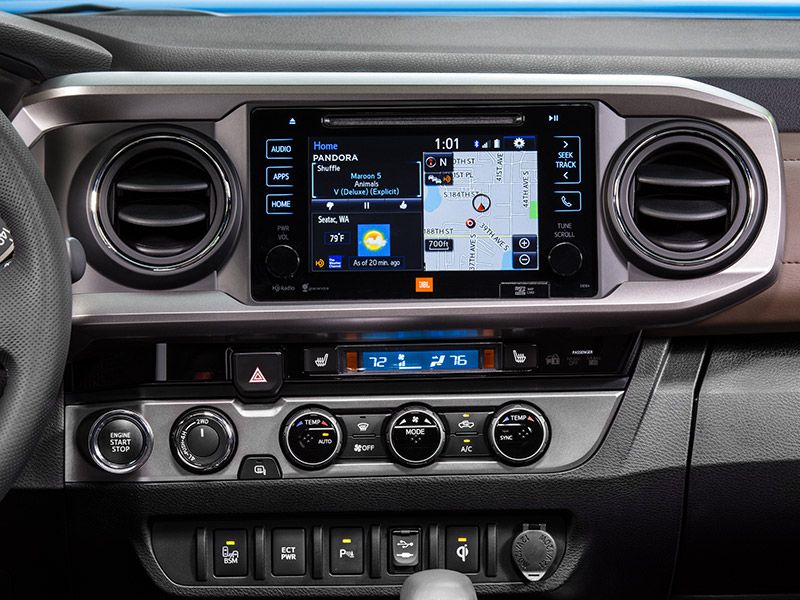
Photo by Toyota
Chassis and Suspension
Both the Tacoma and Tundra are traditional body-on-frame pickup trucks. The Tacoma comes with a fully independent front suspension that uses coil springs and a double-wishbone setup with a 1.18-in diameter stabilizer bar. In the rear, it gets a leaf-spring suspension with staggered outboard-mounted gas shocks. The TRD Pro version uses 2.5-inch FOX internal bypass coil-overs and rear remote reservoir shocks.
The Tundra uses a similar, yet more robust, suspension setup with independent high-mounted double wishbone system up front with a 1.42-inch stabilizer bar and low-pressure nitrogen gas shock absorbers, and a live axle with trapezoidal multi-leaf springs in the rear, with outboard-mounted low-pressure nitrogen gas shock absorbers. Both trucks use hydraulic rack-and-pinion power steering. The Tundra has front and rear disc brakes, while the Tacoma has discs in front and drums in the rear.
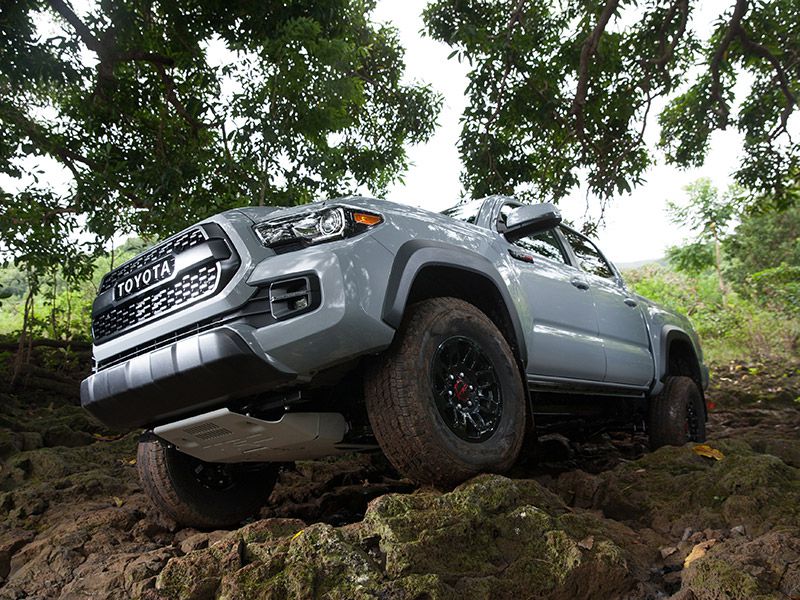
Photo by Toyota
Engine and Transmission
The Tundra comes with a choice of two gasoline powerplants: a 4.6-liter V8 (310 hp and 327 lb-ft of torque) or a 5.7-liter V8 (381 hp and 401 lb-ft of torque). The 4.6 is rated to achieve 15 mpg city/19 mpg highway/16 mpg combined (4x2) or 14/18/16 (4x4). The 5.7 is rated at 13 mpg city/18 mpg highway/15 mpg combined (4x2) or 13 /17/14 (4x4). A six-speed automatic is the only transmission choice.
The Tacoma offers a choice of a 2.7-liter inline four-cylinder engine (159 hp and 180 lb-ft of torque) or a 3.5-liter V6 (278 hp and 265 lb-ft of torque). Fuel economy estimates for the four-banger are 17 mpg city/21 mpg highway/18 mpg combined (manual transmission with 4x4), 19/23/21 (automatic transmission with 4x2), and 19/22/20 (automatic transmission with 4x4). The V6 is rated at 19 mpg city/24 mpg highway/21 mpg combined (automatic 4x2), 18/23/20 (automatic 4x4), 17/20/18 (manual 4x4); 18/22/20 (automatic 4x4). A six-speed automatic transmission is available throughout the line, with a six-speed manual available in TRD models.
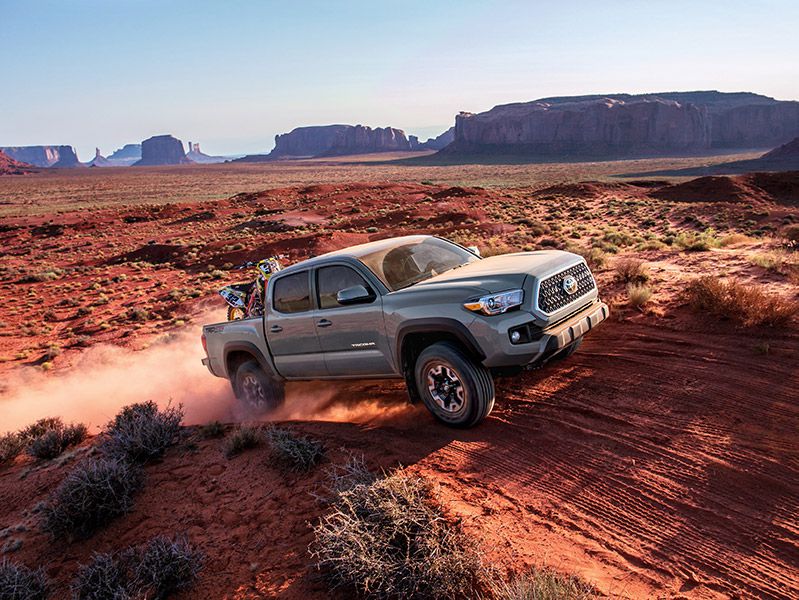
Photo by Toyota
Towing and Hauling
If you need maximum towing and hauling capacity, the Tundra is your best choice in the Toyota lineup. The big truck can haul a payload of 1,440 to 1,730 lbs (depending on configuration) and can tow up to 9,800 to 10,200 lbs, with a gross combined weight rating of 16,000 lbs.
The Tacoma is no slouch, either. It has payload ratings of 1,120 to 1,620 lbs (depending on configuration). Towing capacities range from 3,500 lbs to 6,800 lbs, again depending on the configuration. The Tacoma has a gross combined weight rating of 11,360 lbs.
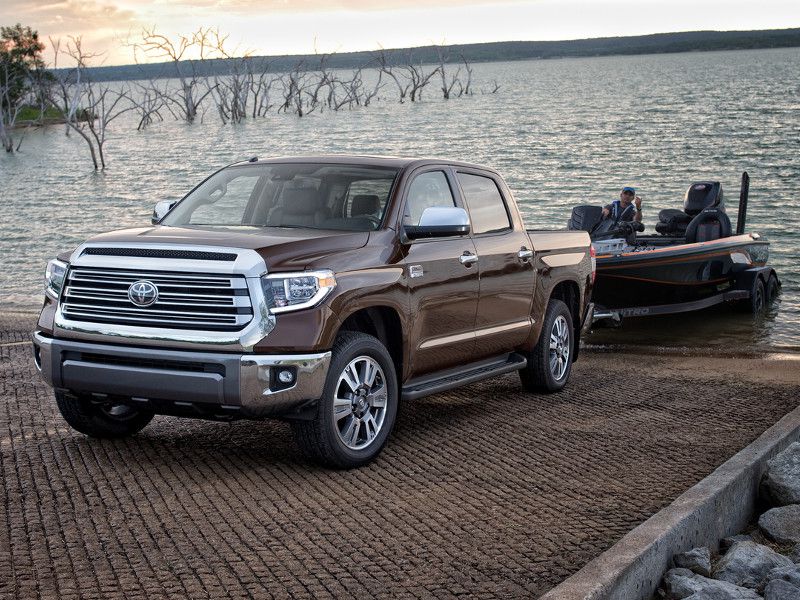
Photo by Toyota
Trim Levels and Prices
The Tacoma comes in six trim levels: SR (starting at $25,550); SR5 ($27,325); TRD Sport ($32,245); TRD Off Road ($44,500); Limited ($37,490); and TRD Pro ($42,660). The Tundra is also available in six trim levels: SR (starting at $31,420); SR5 ($33,130); Limited ($40,685); TRD Pro (starting at $49,880); Platinum ($50,430); and 1794 Edition ($50,430).
The Tacoma can be ordered with an Access Cab or Double Cab, Short Bed or Long Bed, 4x2 or 4x4. All versions come only with a six-speed automatic transmission except the TRD Sport, TRD Off Road, and TRD Pro, which can instead be fitted with a six-speed manual transmission. The Tundra comes in Double Cab or CrewMax, 4x4 or 4x2, Regular Bed or Long Bed, and all versions come with a six-speed automatic transmission.
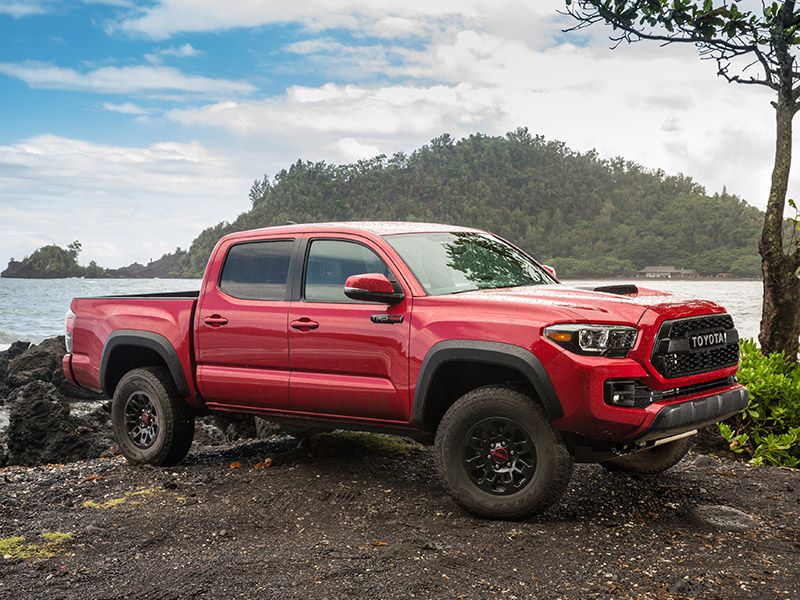
Photo by Toyota
Driving Experience
The Tacoma and Tundra deliver very different driving experiences. The Tacoma is an eager puppy. It wants to bounce down the trails, rush into corners, and scrabble over obstacles. The TRD Sport, Off-Road, and Sport versions have stiff suspensions that can make for a bit of a harsh ride on the street but a nicely compliant ride on the rough stuff.
The Tundra is a more mature, controlled ride, but make no mistake – that 5.7-liter V8 can get up and go. 401 lb-ft of torque is a prodigious amount of output, and excellent technology allows you to get all of that power to the wheels. Which one you’ll prefer really depends on your daily driving requirements. If you prize comfort over all other aspects, the Tundra is for you. If you like to engage fully with your environment, you might be a Tacoma person.
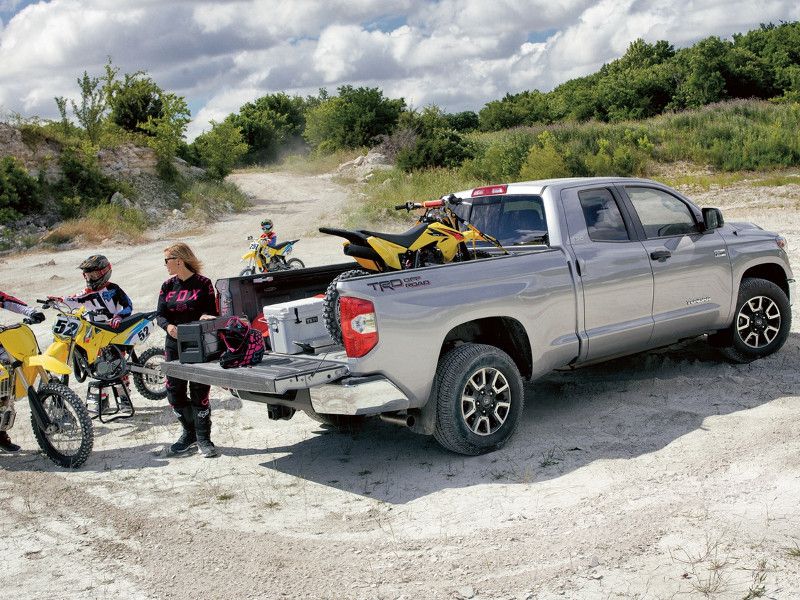
Photo by Toyota
Recommendations
This is a case of no wrong choices, just a better or worse match. If you need a big truck for hauling, towing, and carrying passengers, the Tundra is the one for you. The downsides will be lower fuel economy, a very large footprint, and outlier status among your full-size pickup-owning friends. That is to say, you’ll have to explain why you didn’t pick the more popular Ford F-150, Chevrolet Silverado, or RAM 1500.
If a Tacoma more closely suits your needs, you’ll be getting the best-selling mid-size truck. You won’t be getting a work truck – the Tacoma is more of a play truck, and that’s what it’s meant to be. The good news is the Tacoma is a very strong performer on the resale market, so if you change your mind, you’ll have no problem recouping your investment.
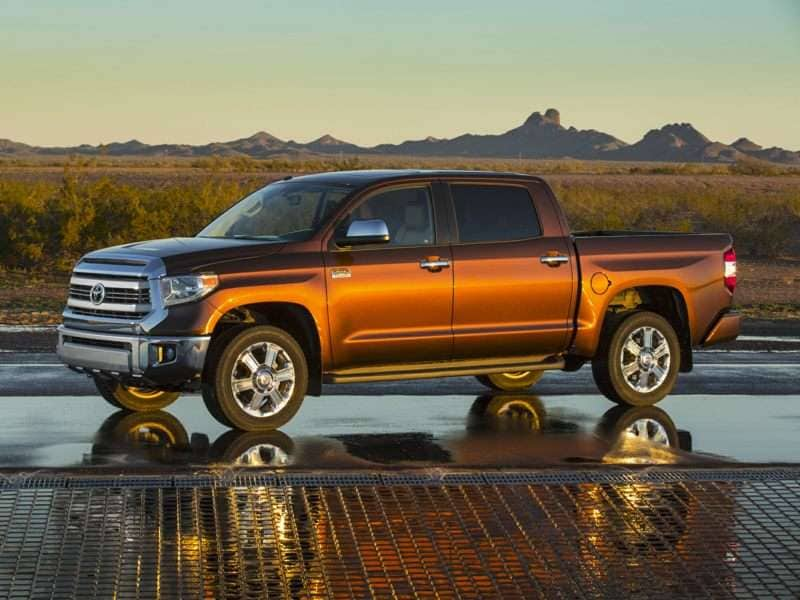
Photo by Toyota